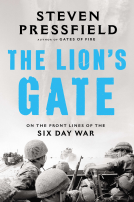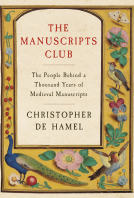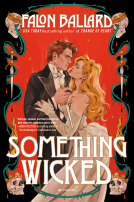Please wait... This may take a moment.
The Urban Plays of the Early Abbey Theatre
Beyond O'Casey
This title was previously available on NetGalley and is now archived.
Pub Date
Nov 01 2014
| Archive Date
Oct 15 2014
Description
Ireland’s Abbey Theatre opened in 1904.
Under the guidance of W. B. Yeats and Lady Augusta Gregory, it became
instrumental to the success of many of the leading Irish playwrights and
actors of the early twentieth century.
Conventional wisdom holds that the playwright Sean O’Casey was the first
to offer a new vision of Irish authenticity in the people and struggles of inner-city
Dublin in his groundbreaking trilogy The Shadow of a Gunman, The Plough
and the Stars, and Juno and the Paycock. Challenging this view, Mannion
argues that there was an established tradition of urban plays within the Abbey
repertoire that has long been overlooked by critics. She seeks to restore
attention to a lesser-known corpus of Irish urban plays, specifically those that
appeared at the Abbey Theatre from the theatre’s founding until 1951, when
the original theatre was destroyed by fire. Mannion illustrates distinct patterns
within this Abbey urban genre and considers in particular themes of poverty,
gender, and class. She provides historical context for the plays and considers
the figures who helped shape the Abbey and this urban subset of plays. With
detailed analysis of box office records and extensive appendixes of cast members
and production schedules, this book offers a rich source of archival material
as well as a fascinating revision to the story of this celebrated institution.
Ireland’s Abbey Theatre opened in 1904. Under the guidance of W. B. Yeats and Lady Augusta Gregory, it became instrumental to the success of many of the leading Irish playwrights and actors of the...
Description
Ireland’s Abbey Theatre opened in 1904.
Under the guidance of W. B. Yeats and Lady Augusta Gregory, it became
instrumental to the success of many of the leading Irish playwrights and
actors of the early twentieth century.
Conventional wisdom holds that the playwright Sean O’Casey was the first
to offer a new vision of Irish authenticity in the people and struggles of inner-city
Dublin in his groundbreaking trilogy The Shadow of a Gunman, The Plough
and the Stars, and Juno and the Paycock. Challenging this view, Mannion
argues that there was an established tradition of urban plays within the Abbey
repertoire that has long been overlooked by critics. She seeks to restore
attention to a lesser-known corpus of Irish urban plays, specifically those that
appeared at the Abbey Theatre from the theatre’s founding until 1951, when
the original theatre was destroyed by fire. Mannion illustrates distinct patterns
within this Abbey urban genre and considers in particular themes of poverty,
gender, and class. She provides historical context for the plays and considers
the figures who helped shape the Abbey and this urban subset of plays. With
detailed analysis of box office records and extensive appendixes of cast members
and production schedules, this book offers a rich source of archival material
as well as a fascinating revision to the story of this celebrated institution.
Advance Praise
"The importance of the Abbey’s urban drama is clearly mapped out
and will be useful to graduate students interested in Irish literature or
scholars of urban theatre."
—Lauren Arrington, University of Liverpool
"This book significantly adds to the narrative
of twentieth century Irish drama, providing
the 'missing chapter' of the Abbey Theatre’s
early history, by skillfully examining and contextualizing
the Theatre’s urban plays outside
of Sean O’Casey’s Dublin trilogy. It is a necessary
addition for all Irish Studies libraries."
—Nelson O’Ceallaigh Ritschel, author of Shaw, Synge, Connolly, and Socialist Provocation
"The importance of the Abbey’s urban drama is clearly mapped out
and will be useful to graduate students interested in Irish literature or
scholars of urban theatre."
—Lauren Arrington, University of...
Advance Praise
"The importance of the Abbey’s urban drama is clearly mapped out
and will be useful to graduate students interested in Irish literature or
scholars of urban theatre."
—Lauren Arrington, University of Liverpool
"This book significantly adds to the narrative
of twentieth century Irish drama, providing
the 'missing chapter' of the Abbey Theatre’s
early history, by skillfully examining and contextualizing
the Theatre’s urban plays outside
of Sean O’Casey’s Dublin trilogy. It is a necessary
addition for all Irish Studies libraries."
—Nelson O’Ceallaigh Ritschel, author of Shaw, Synge, Connolly, and Socialist Provocation
Marketing Plan
No Marketing Info Available
No Marketing Info Available
Available Editions
| EDITION |
Hardcover |
| ISBN |
9780815633679 |
| PRICE |
$34.95 (USD)
|
Additional Information
Available Editions
| EDITION |
Hardcover |
| ISBN |
9780815633679 |
| PRICE |
$34.95 (USD)
|
Average rating from 5 members
Readers who liked this book also liked:
Die Empty
Todd Henry
Business, Leadership, Finance








